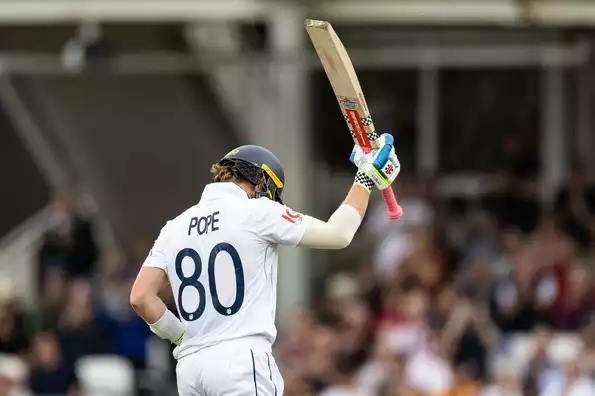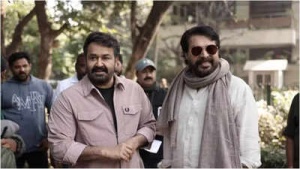Bringing heart to hashtags: Washington Freedom’s Sumeet Rajpal
Sumeet Rajpal's journey from a small town in Satara, Maharashtra, to the forefront of Major League Cricket (MLC) social media is a testament to passion and innovation. A simple Facebook response to a job posting seeking individuals to merge their love for sport with the world of social media set him on an unexpected path.
Rajpal, who once struggled academically and later worked in mall event marketing, was a former cricketer still seeking the thrill that sport provided. His message led him from obscurity to the IPL, where he spent five seasons as a media manager before taking on the challenge of expanding cricket's reach in the United States with Washington Freedom, just before the second MLC season.
"I knew if I go back into the same ecosystem, I would essentially be doing the same thing," Sumeet told Cricbuzz. "The thought of doing something repetitive kind of scared me... So, that thought of doing something again and again and getting stuck in that loop is something which kind of told me, okay, at least, let's go out and do it at a place where the challenges are different.”
The Freedom's Social Media Surge
Sumeet and his team made an immediate impact. Before the second season, Washington Freedom had only around 6,000 Instagram followers. By the time Steven Smith and his team won the championship, the Freedom's follower count had increased nearly fivefold to 28,000.
While American branches of IPL teams, such as MI New York, LA Knight Riders, and Texas Super Kings, were able to quickly build a sizable fan base by leveraging the diaspora, Washington Freedom made strategic investments by acquiring some of the most sought-after players and coaches in the T20 circuit. Players who are not swooned by the low hanging fruits of money but play only if there is a certain pedigree associated in their ownership or coaching ranks.
Freedom is also the only non-IPL team coached by Ricky Ponting, a distinction that raised their profile and paved the way for an aggressive recruitment campaign. Ponting's influence aided Freedom in attracting Australian stars Steve Smith, Travis Head, and Glenn Maxwell, who have a combined following of over 9 million.
"We spoke to all our athletes. We had a very open communication. I told them about the challenges. And one of the best thing about our players is you open up to them," Rajpal explained. "Someone like Glenn Maxwell, one of our best, I still remember seeing about 30-35 Instagram collaboration requests with Glenn Maxwell on his page. Those are the contributions that helped us drive that growth."
Building Trust and Content
Securing this many collaborations from a top-flight athlete is a significant achievement. In comparison, Glenn Maxwell collaborated with the Punjab Kings' official Instagram handle less than ten times during his 45-day stint in the IPL. The amount and quality of social media content obtained from elite players is largely dependent on the media manager's ability to build trust behind the scenes.
It's critical to understand the environment. To assess the team's mood, a player's rhythm during the tournament, and develop content that is consistent with their energy and comfort.
"You understand some guys may not be doing really well on the field, maybe feeling a little low... So what are the ways you can brighten him up?" Rajpal said. "Can we do some interesting content which will brighten his mood? So find out his best hits, find out some behind the scenes content where he's being goofy along with other players… Do some content where you ask questions to other players about good things about him and put it out on social media.”
"I remember we at Freedom created a nice little reel to buoy up Maxwell after he left the IPL owing to an injury... Athletes are not commodities. They are human beings," he added. "The moment you treat those human beings like human beings… I think your perspective will change... Your priority will be to build strong relationships with them, to build trust with them. And that's the game changer."
Rajpal also credits Ricky Ponting's egalitarian approach for the team's success. "He acknowledges that you're here doing a job, you're putting in efforts. You're part of the team, and your efforts are going into creating a better brand for this team... Coaches like Ponting acknowledge and empower people around him.”
The Evolution of Sports Social Media
The extent to which elite sports teams now use social media is a far cry from its modest beginnings. Sumeet has witnessed the industry's evolution firsthand, from an afterthought to a critical component of modern sports communication. When he began his IPL career as the media manager for a well-known franchise in 2018, the digital team consisted of only one videographer who traveled with the team. By 2022, that figure had grown to a full-fledged entourage of ten people. Four videographers, a communications representative, a marketing representative, a social media representative, two video editors, and a photographer were among the traveling media contingent.
The landscape has changed dramatically since 2022. Most IPL franchises now have significantly larger and more specialized digital teams. Motion graphic artists are frequently included in the traveling group. When both on-ground and backend personnel are included, the social media wing of a typical IPL team can now have more than 35 members. The back-end operations are equally dynamic. Teams are now divided into distinct verticals: app management, content marketing (including post promotions), website maintenance, and long-form editorial content such as articles and features. Separate teams handle social media operations, from writing captions and scheduling posts to managing platform-specific strategies. Client servicing professionals, graphic designers, video editors, and animators are also included, demonstrating how comprehensive and high-functioning a modern franchise's media unit has become.
Social media budgets now account for 50% of an IPL team's marketing budget. Many IPL teams now pay content creators between 40-50 lakhs ($40,000) per season to travel with the team throughout the season.
The business of social media in sport has become a high-stakes game as a result of the inflow of substantial investment. Professionals in this field work in a high-pressure environment, where timely content delivery is worth crores of rupees. The demanding IPL travel schedule and limited access to star players exacerbate the challenge, forcing the social media team to compete for valuable access opportunities.
"At the IPL we have gone 75 to 90 days without taking a single day off, that's how hectic it gets, because there's a lot of pressure," Rajpal explained. "So 15-16, hour shifts are normal in the IPL. People don't switch off for those two, three months... At Delhi Capitals, we had a three day mental health break.”
"You hit saturation. Your brain doesn't function. You have to take a break," he added. "So that's how much pressure you're dealing with... So anything you do think of from the lens of storytelling, does it have a start? Does it have a mid? Does it have an end? Even a 15 second story could have those three pieces and that's challenging and exciting at the same time.”
Despite the relentless pace, players often step in to lighten the load by offering ideas and collaborations. A unique fraternity develops over the course of a 15-week grind. Everyone becomes a member of this close-knit ecosystem, bound not only by professional roles but also by shared exhaustion and the unspoken understanding that they are all in this together.
"I have been fortunate with the cricketers I have worked with. They have been empathic to me," Rajpal said. "If people ask me, who's been your favorite athlete you've worked with, hands down it has to be Shreyas Iyer... We'll go out of our way to help them out, whether it's with their brands which they endorse, or the brands we need some content to be shot, the social media team will just jump in and help them out. So it's a very beautiful relationship which starts forming between these two teams.”
"Some players are naturally inclined towards content, so they'll sit, they'll jam, and ask for fashionable content," he continued. "We helped create a partnership where Shreyas got featured on Instagram's global page... So all those transitions, part of his personalities were displayed into one video, and that went on the global Instagram team, which was quite crazy for us.”
"Top cricketers today understand image building and have taken a leaf out of top athletes from other sports," Rajpal noted. "So a lot of cricketers have certain images and we focus on specific content for them.”
"Shikhar also again is one of my most favorite persons I've ever met in my life... He always has ideas about what reels he wants to do," he added.
Storytelling and Authenticity
The content produced by franchises has changed dramatically over time. Storytelling has become the foundation of every reel or video. Today's reels are frequently structured like mini-films. They are deeply rooted in context. For example, a reel featuring a star batsmen in a net session is no longer just about filming him hitting balls. The story could begin with a shot of the player leaving the hotel with swagger, then boarding the team bus, putting on his gloves, and finally entering the nets. The climax consists of a flurry of crisp shots, possibly punctuated by a tongue-in-cheek remark from a coach or teammate, all set to background music that enhances the mood and visual appeal.
"Initially, the content was way too packaged... But the way it evolved is that it has started getting a lot more authentic," Rajpal explained. "And by authentic content, I mean you show the real side of a player... It's focused on the ambient sound. The frames are easy, the cuts are simpler, and people tend to enjoy this content a lot more."
"So there's a nice mix, but the larger focus is on creating content which is easy to consume, which is authentic, and storytelling has become the most important part right now, and that's what is driving the content growth on the platform."
Social media teams act as high-voltage poles, connecting to every member of the squad. While every team owner claims their franchise is a family, a sentiment that has become cliché, the social media unit is the emotional heartbeat of that family, the invisible thread that binds everyone together, capturing moments, lifting moods, and reinforcing a sense of shared purpose.
"We control the perception of efforts put in by the unit," Rajpal concluded. "At Washington Freedom now, there are kinds of efforts which the owners, the management, the coaches, support staff make that actually create the atmosphere of a family... Our job is to let that narrative out and let people know how everyone is bonding, and you will naturally see that through the content pieces.”
Newer articles
-
 Suchitra Krishnamoorthi faces backlash for claiming Air India crash survivor was ‘LYING’; Deletes post and issues apology
Suchitra Krishnamoorthi faces backlash for claiming Air India crash survivor was ‘LYING’; Deletes post and issues apology
-
 Mahbub Anam replaces Faruque Ahmed as new BPL chairman
Mahbub Anam replaces Faruque Ahmed as new BPL chairman
-
 Pope retains No.3 spot; Carse set for home 'debut'
Pope retains No.3 spot; Carse set for home 'debut'
-
 'Would be remarkable to choose someone else if their last knock was a 170'
'Would be remarkable to choose someone else if their last knock was a 170'
-
 India vs England: Can Bazball outplay India's new era? Key battles and what to expect
India vs England: Can Bazball outplay India's new era? Key battles and what to expect
-
 Will Nysa Devgan enter Bollywood like Raveena Tandon's daughter Rasha Thadani? Kajol reveals the truth
Will Nysa Devgan enter Bollywood like Raveena Tandon's daughter Rasha Thadani? Kajol reveals the truth
-
 Ajinkya Rahane opts against Karun Nair in his India XI for first Test; explains why
Ajinkya Rahane opts against Karun Nair in his India XI for first Test; explains why
-
 5 smart tricks to instantly influence anyone (without being pushy), as per psychology
5 smart tricks to instantly influence anyone (without being pushy), as per psychology
-
 Still swooning over Ahn Hyo Seop and Kim Sejeong in ‘Business Proposal’? Here are 3 new K-Dramas to obsess over next!
Still swooning over Ahn Hyo Seop and Kim Sejeong in ‘Business Proposal’? Here are 3 new K-Dramas to obsess over next!
-
 Is Mohanlal, Mammootty, Mahesh Narayanan’s project titled ‘Patriot’? - Here’s what we know
Is Mohanlal, Mammootty, Mahesh Narayanan’s project titled ‘Patriot’? - Here’s what we know
